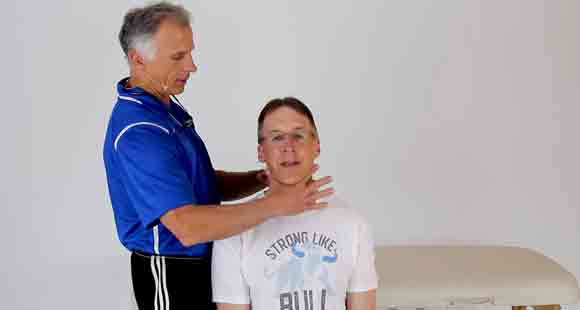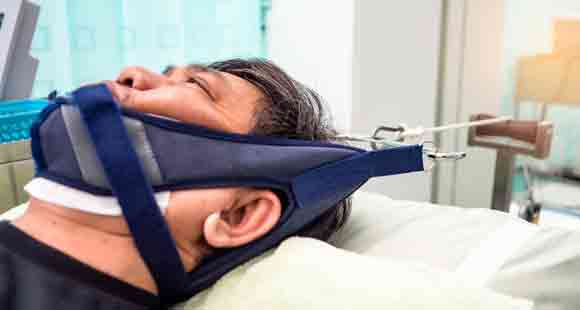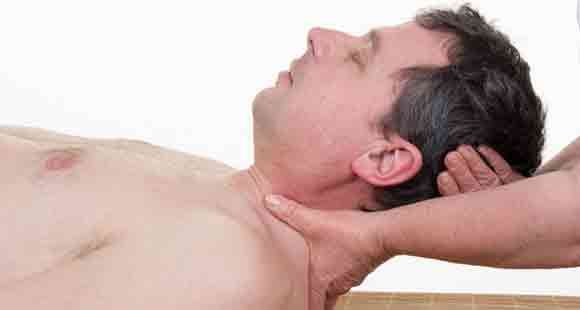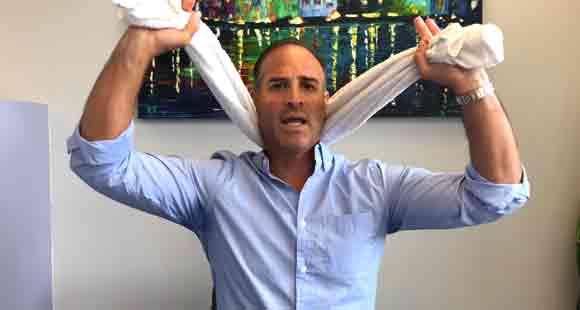Complete Guide on Cervical Traction Physical Therapy for Neck Pain
For the uninitiated, cervical traction physical therapy might not sound like it has anything to do with neck pain. But it’s actually the technical term for the traction of the spine which is done to provide pain relief for those who suffer neck aches.
Experiencing such can cause serious some serious suffering as it can hinder your body’s mobility and prevent you from functioning in a normal manner. This is why it’s crucial to address the condition properly and effectively.
Looking for options to deal with your own body pains? Learn more about cervical traction physical therapy below.

What Is Cervical Traction Physical Therapy?
Also simply referred to as cervical traction, this is a procedure that’s used to treat cervical radiculopathy and neck pains. It can also be helpful in addressing cervical muscle spasms, bulging or herniated discs in the neck, neck strains, and neck arthritis. All of these also cause immense pains in one’s upper back, neck, and arms.
What is cervical traction? It’s a process that involves pulling your head away from your neck to decompress your spine, neck, and upper back. The expansion it will create helps reduce the pressure on the spine. This provides immediate relief in most cases, making this procedure one of the fastest-acting treatment options out there.
Often considered as an alternative treatment to various conditions causing neck pains, cervical traction could help you avoid getting a surgery or taking medication. As it is a form of physical therapy, it’s a more convenient option for a lot of sufferers. You can even do it at home and on your own with the help of some devices so it can be the most fuss-free technique to deal with neck pains.
What Does Cervical Traction Physical Therapy Do?
According to experts, cervical traction has three general purposes:
- To help decompress the pressure placed on the spine’s discs. This provides relief to your neck and back.
- To create spaces in the areas where nerves exit the spine canal. This can help provide relief to pinched nerves.
- To stretch the muscles and joint structures found in the general area of your neck.
All three purposes can help provide pain relief to those who experience stiffness, soreness, and compression of nerves and muscles in the area. This also makes it a suitable treatment option for various diagnosed conditions and not just for casual neck pains.
In the simplest of terms, cervical traction is meant to remove the strain on the pressure points in your back, neck, and spinal column. Poor posture, trauma, and degenerative conditions can distort and apply too much pressure on the spine which can then result in slipped or herniated discs. It can then prevent the normal circulation in the area as well as put too much weight on areas that are not meant to carry any weight. These tend to cause the pain that most sufferers experience.
By expanding the neck and upper back, you’re practically letting the affected areas breathe and rearrange itself to relieve itself from the pressure that has been causing you pain and discomfort. It will ideally cause bulging or protruding disks as well as trapped veins and muscles to go back to their original positions.
How would you know if you should seek a cervical traction physical therapy session? Seeing your doctor or physical therapist first is highly recommended. These specialists can tell you whether your case is treatable by this procedure.
Does Neck Traction Really Work?

While this procedure sounds promising, an important question still needs to be asked: does it really work? A lot of so-called medical procedures are being done nowadays claiming to treat various health issues and ailments but not all of them work. Is neck traction one of them or can you really count on this procedure to help improve your condition?
To be very honest, you’ll find a lot of writings online saying that the effectiveness of this method is still in need of sufficient proof. However, quite a few studies have already proven the effectiveness of this form of physical therapy recently. In fact, there are two studies that can help convince you that this method can be worth your while.
At the top of this list is the meta-analysis published in Spine that included randomized controlled trials for intermittent cervical traction (ICT) procedures. At the end of the testings, it has shown that those who received ICT had significantly lower pain scores than the subjects that received placebo.
They also compared the difference between the pain scores right after the treatment and the follow-up period. The numbers stayed in the same range which means that the effects of this treatment can be expected to last a while.
An earlier study conducted in 2014, on the other hand, found that mechanical traction is effective in treating those with neck pain from pinched nerves. It has shown to be more effective than exercise and over-the-door traction tools.
It’s perfectly understandable for many to look for additional scientific proof for the effectiveness of cervical traction. But for most folks, their doctor and physical therapist’s recommendations is already enough to convince them to give the procedure a try. Besides, they’re already in great pain and neck traction promises immediate relief, so why not give it a shot? It works for most people who tried it, anyway, so there’s also a good chance that it will work for you, too.
Neck Traction Benefits
What are the neck traction benefits that you can enjoy if you give this procedure a shot? Here are a few:
- Relieves neck pain
- Loosens up and relaxes stiff neck and upper back muscles
- Increases muscle flexibility
- Relieves pressure points
- Alleviates joint, sprain, and spasm pains
- Flattens bulging and protruding discs
- Treats neck injuries
- Releases pinched nerves
- Addresses cervical spondylosis
In the simplest of terms, neck traction can and will address various causes of neck pains. This is especially true if it’s caused by a physical issue.
How It’s Done
How is cervical traction performed? There are a few techniques to go about this procedure. Some of the most popular ones are the following:
Manual Cervical Traction

This method is generally performed by a trained and experienced physical therapist. As the name suggests, a specialist will do the traction manually by gently pulling your head away from your neck. They will keep the position for about 10 seconds then release your head slowly. The process will be repeated for a few times. The PT can also adjust your position during the procedure to achieve the desired results.
Mechanical Cervical Traction
This is another in-office treatment procedure for cervical traction. A PT will also need to be present to perform the traction but they’ll only mostly operate the traction machine and adjust your positioning when needed.
To perform this method, a PT will hook you up to a cervical traction machine by attaching a harness to your neck. The PT will then select the amount of force the machine will use to pull your head away from your body.
Over-the-Door Cervical Traction
This is the DIY version of cervical traction that you can definitely do at home. All you need is a head and neck harness with a pulley system that is designed to be attached over the door. This will give you the traction force you need to pull your head away from your neck.
It’s important to stick with just 20 lbs of force and 10-second hold durations when starting out with this procedure. You can then increase the weight and the duration of each hold as you get used to the process. It’s also crucial to work closely with a professional even if you’re doing the treatment at home. This way, they can monitor your progress and help ensure that you’re performing cervical traction properly.
Warnings and Side Effects
Cervical traction is generally safe and can even be done at any time of the day. However, like any other physical activity, it comes with its fair share of dangers. This is why it’s crucial that it’s performed correctly and properly. The treatment should be pain-free and shouldn’t make your neck and back pains worse. If it does, then you should seek professional help right away.
There are also a few side effects that you might experience. These include dizziness, mild headaches, and even fainting. You shouldn't put up with these, however. If you experience them while getting the treatment, you should stop immediately and discuss them with your specialist.
Can I Do Cervical Traction at Home?

As mentioned above, there are ways how you can perform cervical traction without leaving the house. The over-the-door option is a common at-home option for those who don’t want to get in-office treatments.
Aside from this, however, you can also do cervical traction exercises using specially designed devices. To get to know them and the tools you need to perform them, check out the list below.
Cervical Traction Exercises:
With An Air Neck Traction Device
- Place an air neck traction device around your neck and attach it to your head accordingly.
- Pump it up.
- Wear it for about 20 to 30 minutes.
Note: You can wear this device at any time of the day or even for multiple times during the day. It’s best worn when you’re doing an activity that will make you slouch, however.
With A Posture Pump
- Stretch and warm up your neck and upper back muscles.
- Lie down on your back and maintain a good posture.
- Attach the posture pump to your head and tighten it around your forehead. Make sure not to overly tighten the device as it can be injurious to your health.
- Slowly pump until you’ve reached the threshold of your comfort level. Never push it until you’re feeling hurt or uncomfortable.
- Hold for 10 seconds and then release the air.
- Repeat for 15 times.
Different Kinds Of Assisted Stretching
Stretching your neck and upper back can also work as an alternative to neck traction. You can do this with the help of an exercise ball or resistance bands. Practicing yoga and pilates are also good ways to achieve similar results through stretching.
The Takeaway
With the proper execution, cervical traction can really be a great way to address neck pains and body aches. It can certainly help improve your quality of life despite its utter simplicity as it can free you from the pains you’re experiencing on a regular basis.
Just make sure to consult with your doctor or physical therapist before starting any kind of treatment. This procedure can be quite tricky and it’s safest to do with expert supervision.
